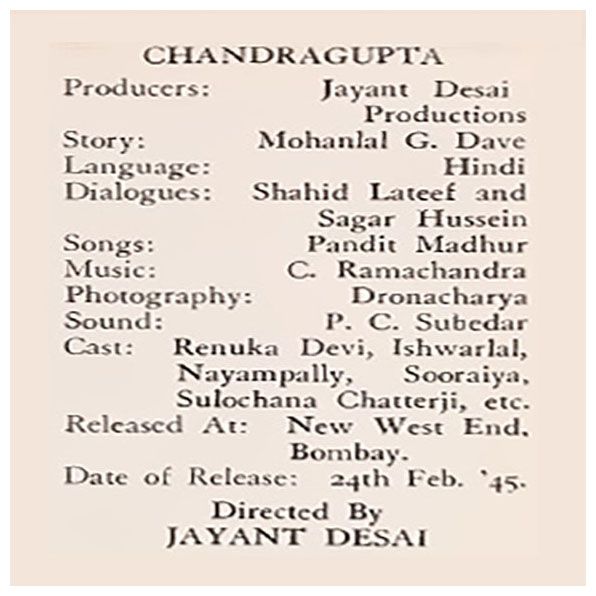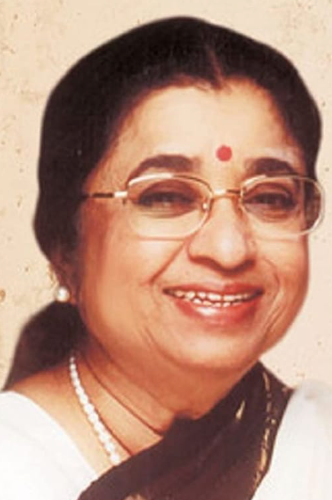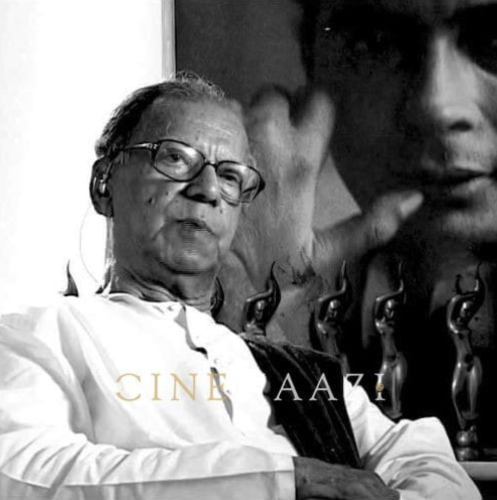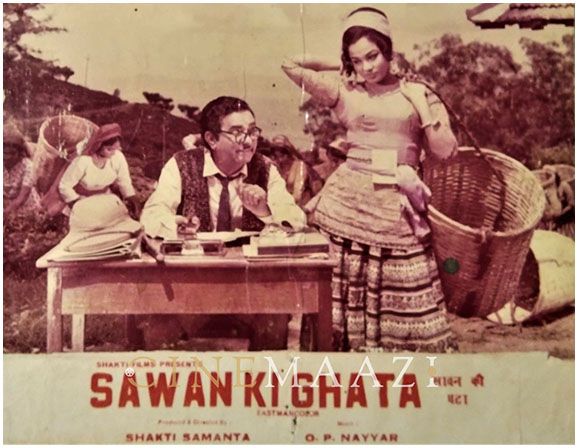"Chandragupta" Historically Incorrect But Entertaining!

Is it perhaps too much expect a historically correct story from that popular film scribe, Mohanlal Dave? Nothing definite is known about his educational qualifications or about his precise knowledge of history. It is, therefore, not surprising to find "Chandragupta" a historically incorrect tale which is likely to confuse our students who are taught something else in their school-rooms.
According to Vincent Smith (The Early History of India, pp. 118-19), Seleukos, conventionally described as the King of Syria crossed the Indus in or about 305 B.C. for the first time. Seleukos was one of the great generals of Alexander, the Great. The other was Antigonos. In 312 B.C., i.e. seven years before Seleukos invaded India, he defeated Antigonos and recovered the possession of Babylon. Antigonos and Seleukos were therefore sworn enemies. Vincent Smith writes that Seleukos defeated and ultimately slew Antigonos in Ipsos, 2,500 miles from the Indus, in 301 B.C. i.e. two years after his treaty with Chandragupta.
Chandragupta gave battle to the invader and Seleukos was compelled to conclude a humiliating peace giving away a large part of Ariana (known as Kabul, Herat and Kandahar) and his daughter in a matrimonial alliance. This alliance was concluded in 303 B.C.
These are the true historical facts on which a historical subject like "Chandragupta" should have been based.
Film-scribe Mohanlal Dave has, however, given his own history of Chandragupta, something which the original never lived. For instance: (1) Chandragupta had never even once become the prisoner of Seleukos. (2) When Seleukos invaded India, Chandragupta was a well-established and very much feared ruler of India having defeated Nanda of Magadha years before. (3) Seleukos and Antigonos were sworn enemies and the former killed the latter, two years after his treaty with Chandragupta.
According to Mohanlal Dave, Chandragupta in saving the life of Seleukos, himself becomes his prisoner at the hands of Antigonos, who is shown in the picture as a general of Seleukos. The captive Chandragupta now falls in love with Helen, the daughter of Seleukos and begins teaching her horsemanship. With the help of Chanakya, Chandragupta is shown as escaping from his captivity to give a battle to Seleukos in which Seleukos, Antigonos and others become prisoners. On the wedding day of Helen with Chandragupta, Seleukos makes an attempt to prison Chandragupta, but through a happy accident succeeds in killing Antigonos, his commander, who drinks the poison with an air of bravado. Actually Antigonos died 2,500 miles away from India and two years later.
A historical picture is a great responsibility both for the producer and the writer. In this case the producer is Jayant Desai, but he can be acquitted as he is completely innocent of history. Jayant never claims any knowledge of history or letters. He is merely a film craftsman who does his best, under all circumstances, of the story material placed before him. He wouldn't mind even if Charlie had acted Chandragupta. Actually Ishwarlal acts the hero of the picture and Jayant does not seem to mind it. Between Iswarlal and the original Chandragupta there is a two-thousand years-wide gulf all round and it remains just that wide in the picture.
If students see this picture, they must forget the incidents portrayed in the story because these were not historical facts. "Chandragupta" presents "history" cooked up by Mohanlal Dave, who proves himself a prize-fool seeing that he has ignored the correct and outstanding incidents of history.
Forgetting these glaring historical inaccuracies for a while, "Chandragupta" provides sufficient evidence of neat direction, dramatic development and good motion picture craftsmanship. In these respects, it is indeed an outstanding production, in comparison with the stuff that is found in the town these days.
The main defect in the picture, apart from its historical inaccuracies, is the casting of the title role. Ishwarlal disgraces the role of Chandragupta. If Chandragupta had looked like our Ishwarlal, he would not have had a dog's chance to become an emperor. Ishwarlal looks like so much "vegetable", who would faint any minute at the sight of a sword. Not that Ishwarlal does not act well. The poor boy tries his usual best-serious and sincere-but he was asked to play a role at the dream of which Ishwarlal should tremble. We put this misfortune down to the acute shortage of talent in our film industry. Producers seem to be making the best of the bad material available. Not that we didn't have any one to play Chandragupta. We did have a couple of boys, but we guess they must be having swollen heads and quoting impossible figures as their remuneration which the Box-office Jayant Desai cannot dream of paying.
NAYAMPALLY SCORES
Nayampally does very well in the role of Chanakya or Kautilya. This character is cast in a strain of fanatic patriotism with die-hard ideals and unscrupulous methods to achieve objects. We must say that Nayampally has understood his part well and acquired himself excellently with just enough melodrama that was needed to put the complex role over. Nayampally's dialogues, however, still need a bit of polishing.
Ebrahim does quite well in the impulsive role of Antigonos. He looks our imagination of an invader.
Renuka Devi gives a pretty sweet performance in the role of Helen, the heroine of the story. She looks foreign and distantly sweet. In part of the story, she presents a sickly and wrinkled appearance but at other times she looks quite smart. Was she by any chance ill during the picture?
Sulochana Chatterjee acts as a political weapon with youth, dance and music as her accessories. Though the music is someone else's, Sulochana's dance is not so bad.
NOT ALL INDIA LANGUAGE
The main stumbling block in the picture is its dialogue which is more Hindi than Hindustani. Two Muslim writers seem to have given a good Hindi performance but we are sure that over 50 per cent of the language will neither be understood nor relished in the Punjab and other parts of the North which are populated by people who understand hardly anything of Hindi and nothing of high-flown Hindi. The picture, therefore, inspite of its spectacular contents at places, will have a restricted appeal in several provinces.
The song compositions of Pandit Madhur are just words-Hindi, Urdu, Sanskrit and Persian words-thrown at random without even a suspicion of meaning or intelligence. This fellow seems to be a meaningless word-spinner without any design before his eyes.
C Ramchandra seems to have maintained his reputation for stolen rhythm. Most of his tunes can be spotted as bits and pieces from different wholes given by different people. However, Ramchandra does this mixing job pretty well with a constant eye on the rhythm that gets a response from the audience. A couple of such mixtures do sound pleasing to the car in "Chandragupta".
A DIRECTOR'S PICTURE
The spectacular war scenes in this picture, almost exactly as in the case of "Prithvi Vallabh" of Minerva, are supplied from an Italian picture which once advocated the might and glory of Mussolini. Both Jayant and Desai and Sohrab Modi need not feel apologetic about this. We cannot treat Mussolini better being an unarmed nation.
As we have said before Jayant Desai has neatly directed the story and framed it in good motion picture craftsmanship. In fact Jayant is the hero of this picture, as "Chandragupta" is particularly a director's picture with its wrong historical data, unfortunate casting of the two main roles of Chandragupta and Seleukos and meaningless words of the music. It has, however, constantly changing entertainment which lags a big in the last four reels. A little speeding up would not have harmed even he "heroic vegetable", Ishwarlal, the die-hard amongst our screen heroes.
This article was published in Filmindia magazine’s April 1945, Vol. 11, Issue 4 edition as a part of "Our Review" section.
About the Author







.jpg)


